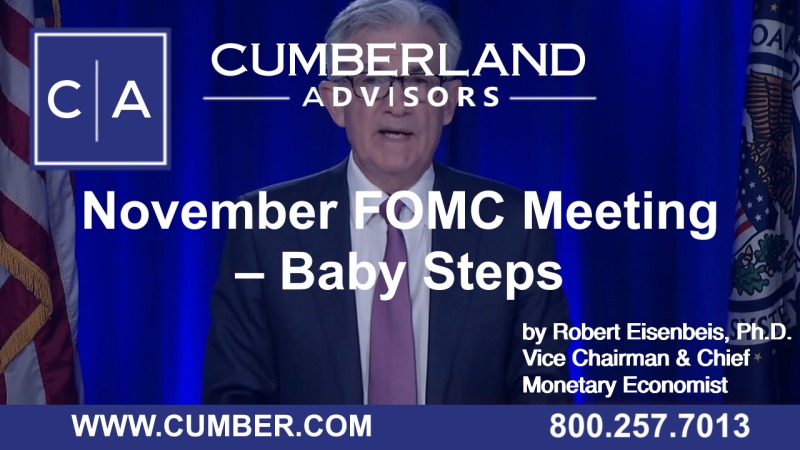The FOMC kept its target range for the federal funds rate at 0–0.25% but did make a small move at its November meeting to begin phasing out its asset purchase program. It scaled back its purchases of Treasuries for the month of November by $10 billion to $70 billion and its purchases of MBS by $5 billion to $35 billion. It further indicated it would reduce purchases by similar amounts in December and perhaps beyond. At that pace the Fed will still add another $420 billion to its portfolio by June, when purchases would cease, resulting in a total portfolio of over $9 trillion. Justification for the move was the Committee’s judgment that the threshold of “substantial progress in meeting the Committee’s goals since last December” had been achieved. Interestingly, unlike the last time the Fed embarked upon a tapering process, following the announcement the stock market was up a bit; and there was virtually no movement in the 10-year Treasury rate. There was no sign of a taper tantrum on Wednesday or Thursday, either.

At the press conference following the meeting, four important additional insights emerged. First, Powell was very clear that the threshold for a rate change was much more stringent than it was for the Committee to start the tapering process. Second, he was very clear that moving against inflation was conditional on first having achieved the Committee’s full-employment objective. When pressed, he danced around citing specific numbers or criteria and instead said it would depend upon a wide range of factors that the Committee would consider in making the determination. Third, he also stated that the Committee had not even contemplated the possibility of a rate change at its meeting and had instead focused on the asset purchase program. Finally, he noted that while the term transitory had become a distraction, the Committee did include it in the statement this time in an attempt to clarify that it viewed the increases in inflation to be largely driven by supply chain constraints, which were not likely to persist, as opposed to other causes.
So policy is likely to be accommodative well into 2022, with the exact path uncertain because of the virus. One reporter pressed Powell on whether there would be two rate hikes next year, consistent with the Summary of Economic Projections; but Powell fell back on the fact that things were too uncertain and dependent on the virus, on how quickly labor markets recover, and on supply chain issues. It is interesting to speculate if the press conference might have gone differently if the October jobs number had been available? As for the virus, while it has abated recently, we are getting new reports of surges in some states and even a new variant of the Delta COVID virus (see David Kotok, “COVID Update,” November 5, 2021, https://www.cumber.com/market-commentary/covid-update).
Robert Eisenbeis, Ph.D.
Vice Chairman & Chief Monetary Economist
Email | Bio
Links to other websites or electronic media controlled or offered by Third-Parties (non-affiliates of Cumberland Advisors) are provided only as a reference and courtesy to our users. Cumberland Advisors has no control over such websites, does not recommend or endorse any opinions, ideas, products, information, or content of such sites, and makes no warranties as to the accuracy, completeness, reliability or suitability of their content. Cumberland Advisors hereby disclaims liability for any information, materials, products or services posted or offered at any of the Third-Party websites. The Third-Party may have a privacy and/or security policy different from that of Cumberland Advisors. Therefore, please refer to the specific privacy and security policies of the Third-Party when accessing their websites.
Cumberland Advisors Market Commentaries offer insights and analysis on upcoming, important economic issues that potentially impact global financial markets. Our team shares their thinking on global economic developments, market news and other factors that often influence investment opportunities and strategies.

